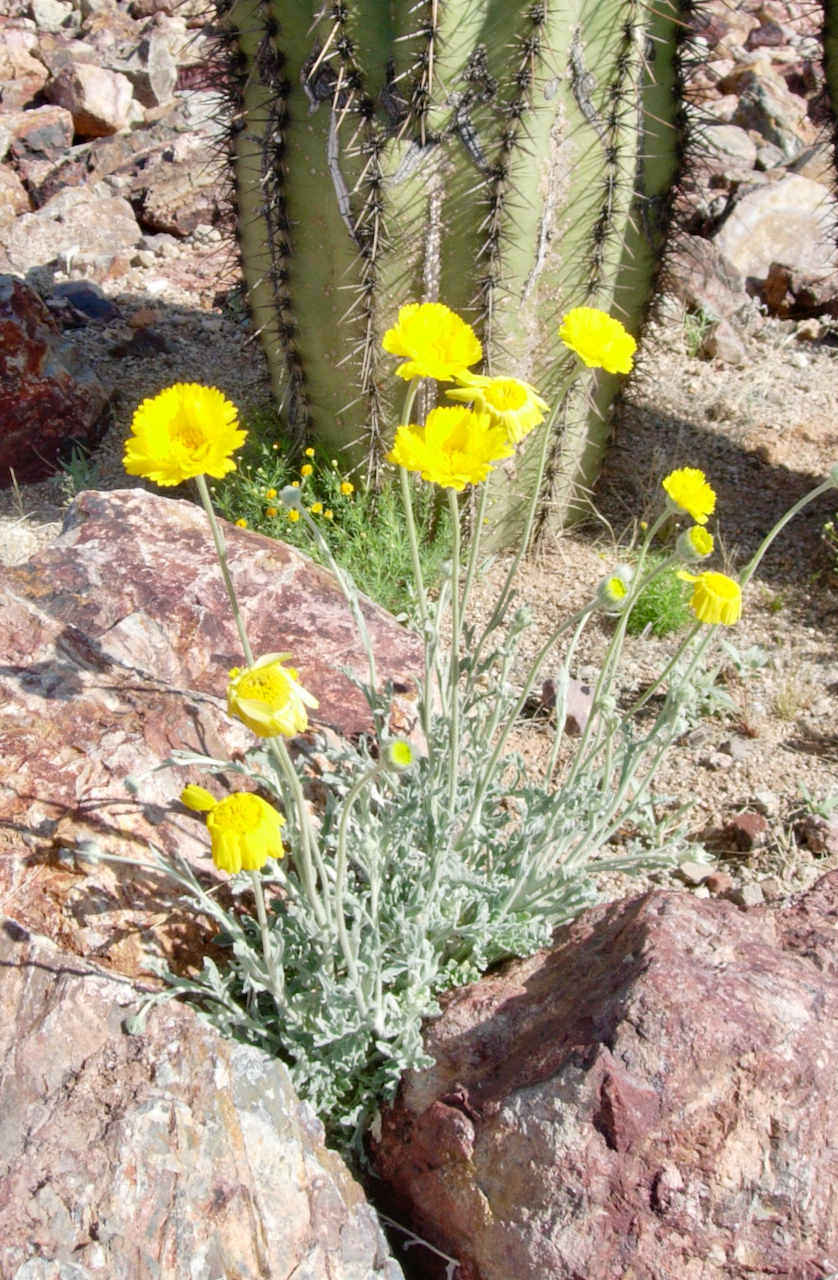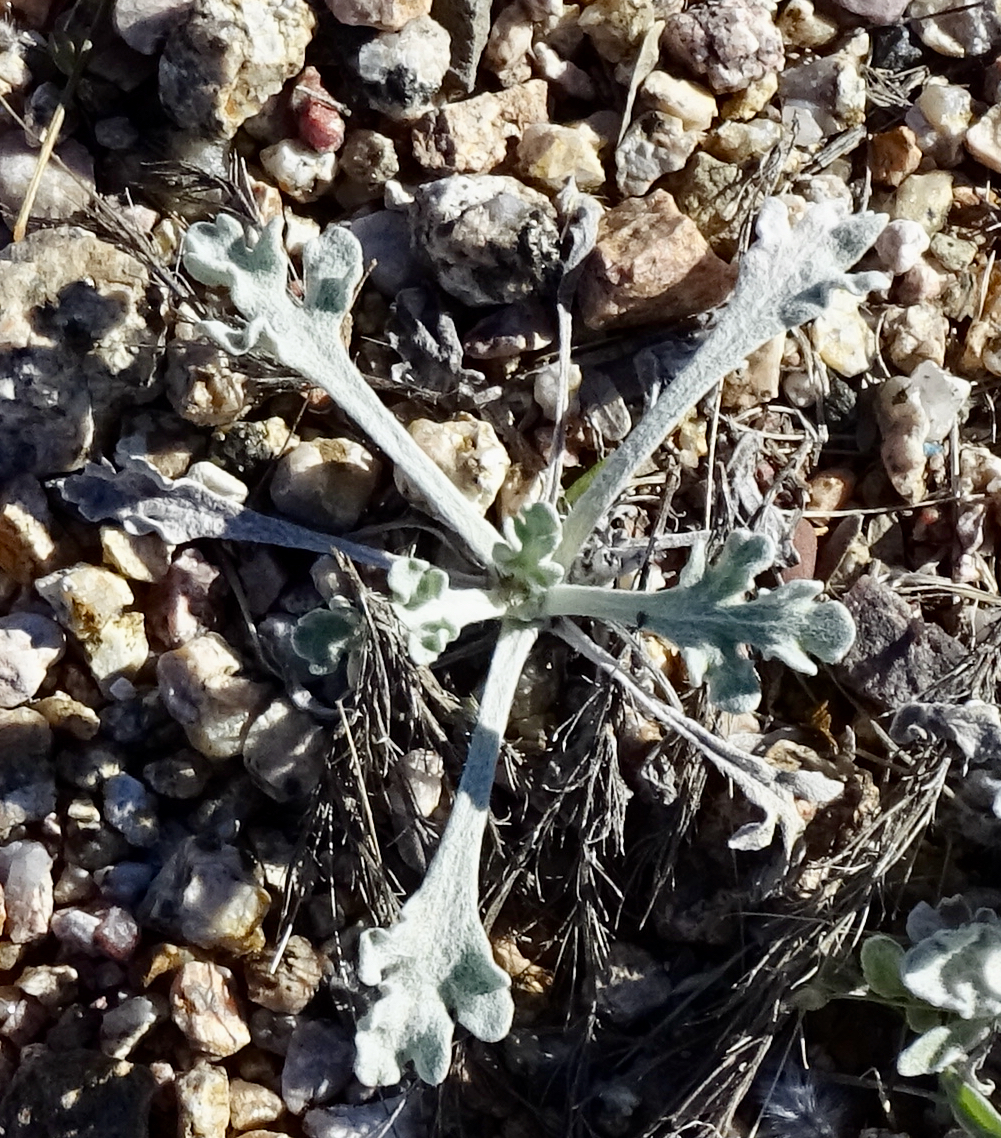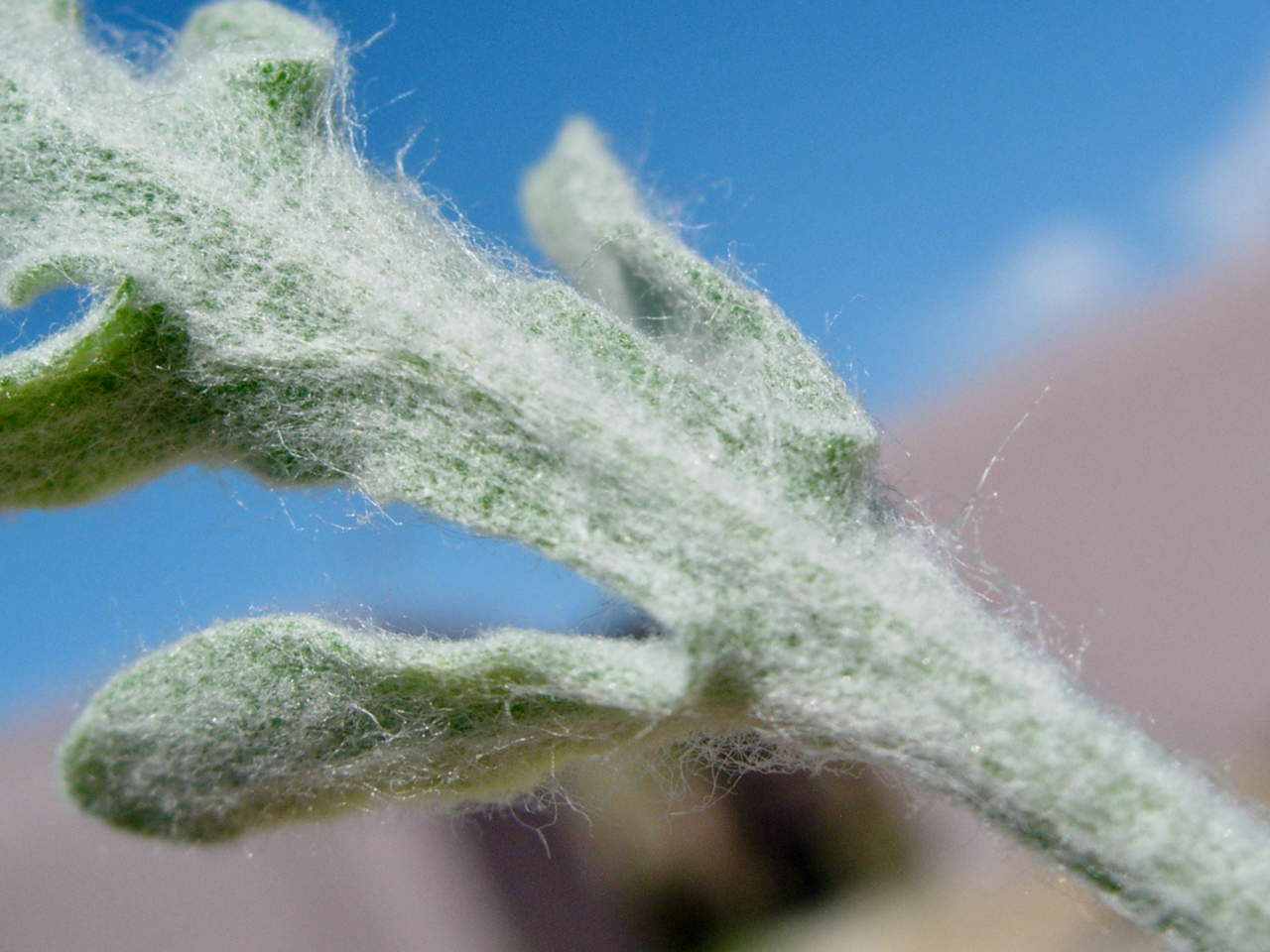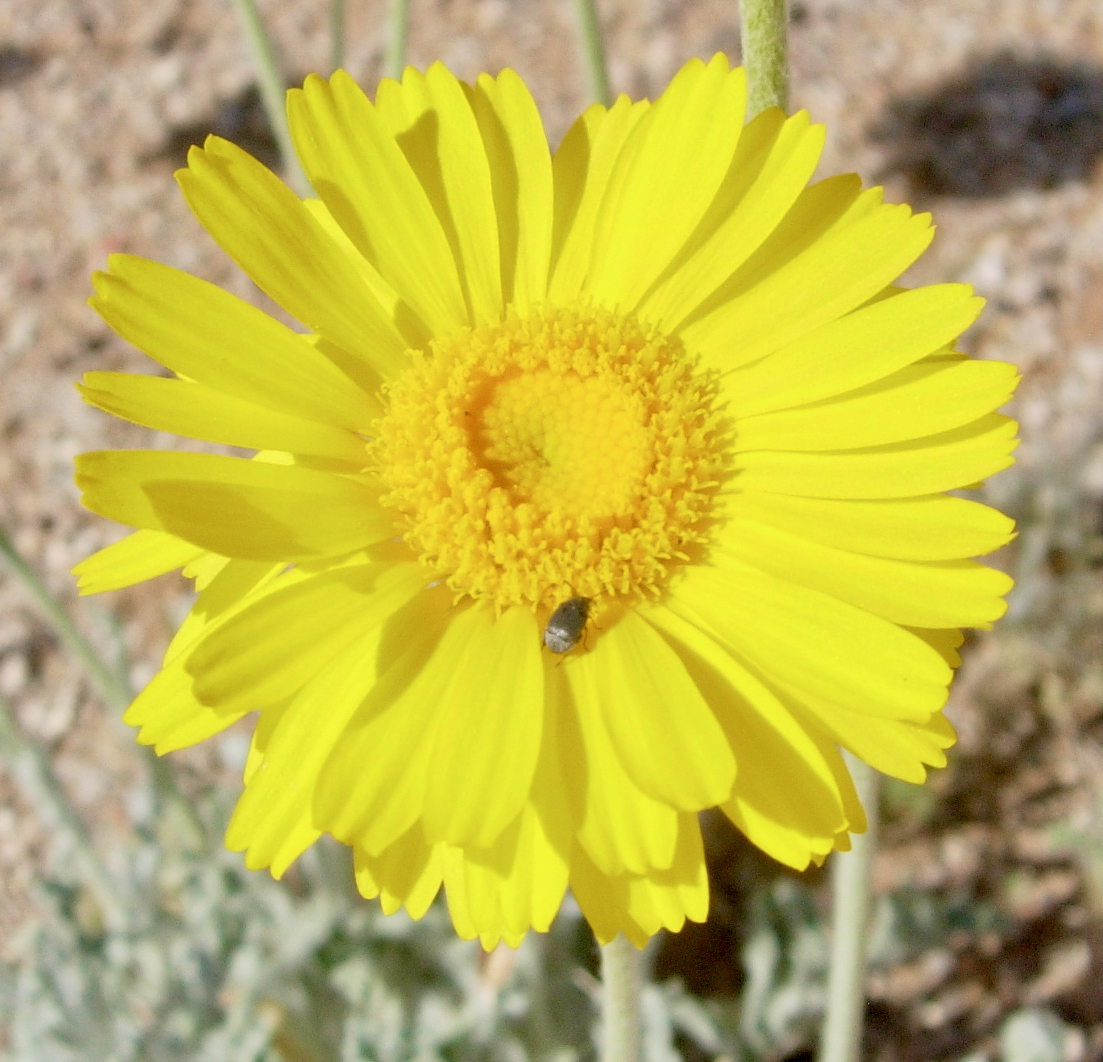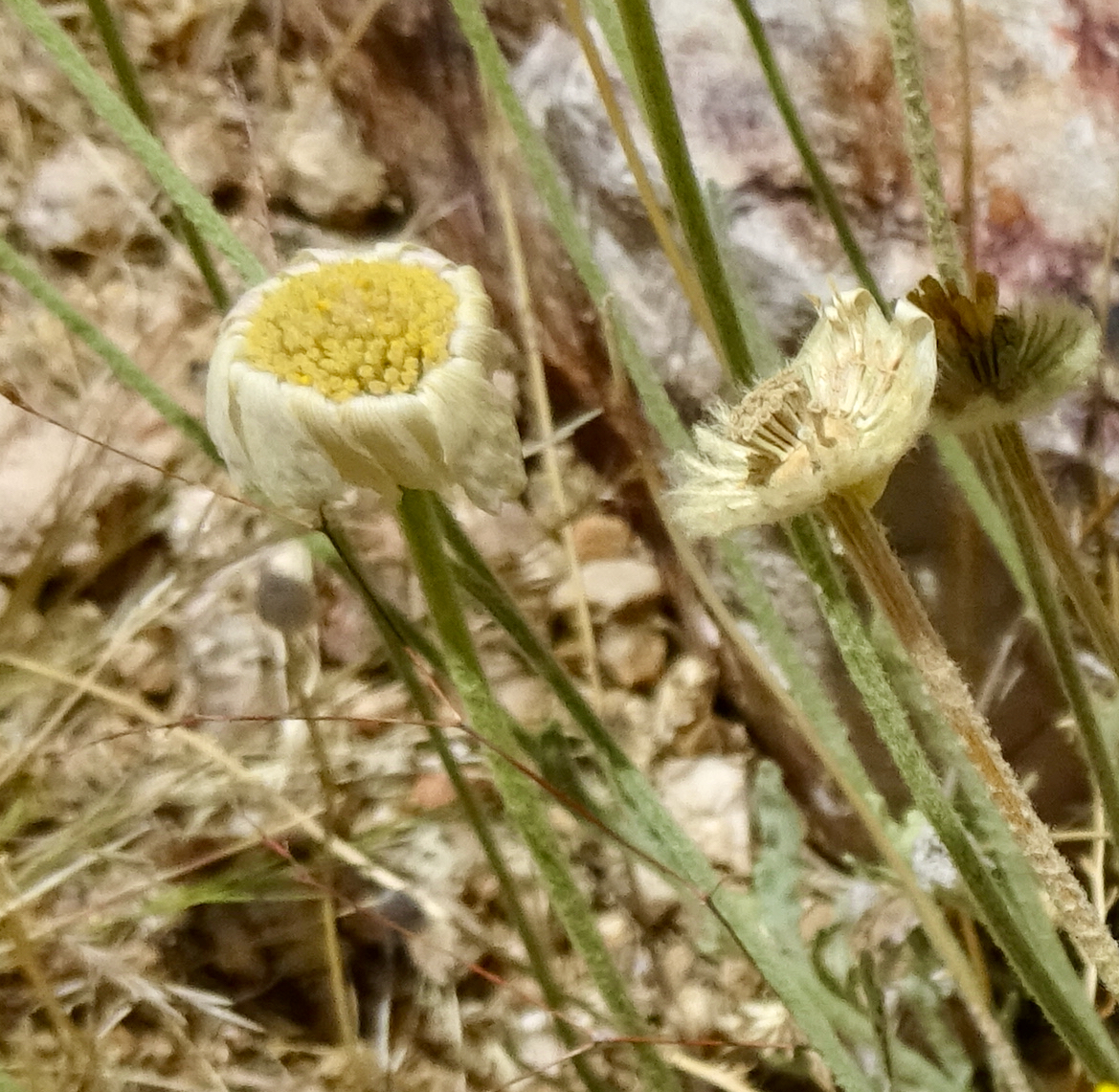Desert Marigold
Baileya multiradiata
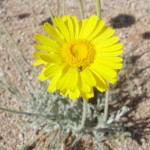
About the Plant
You may find this native blooming at almost any time of the year. Desert marigold's large yellow daisies and almost white foliage make a cheerful addition to any garden and look great near cactus and other succulents. It is a short-lived native perennial that will reseed regularly. Transplant seedlings in fall if you want to spread them around.
Give desert marigold good drainage and full sun. It can survive on natural rainfall. Help it out in the driest years by providing some gravel mulch, by planting it near rocks where the roots can enjoy the cooler, moister soil under the rock, or by getting out your watering can. Faded flowers can be removed any time - cut off the flower stalk, not below the flower, but all the way down at the base of that long flower stalk. If the plant begins looking ratty, cut off all the upper foliage, leaving about 3 inches of fresh leaves.
Notes: desert marigold and bahia may look similar at first glance. This Weekly Plant shows how to tell the two plants apart.
Wildlife value: attracts insects, including pollinators.
More Information:
Weekly Plant on desert marigold and bahia
Horticultural information from ASU
Technical botanical description from SEINet
In books:
Native Plants for Southwestern Landscapes by Judy Mielke, page 87.
Perennials for the Southwest by Mary Irish, page 105.
ID Characteristics
Desert marigold has bright yellow flowers about 2 inches across. There are several overlapping layers of petals. The end of each petal has 3 shallow lobes. The flower stem has a few small, alternate leaves and is often leafless near the flower head.
